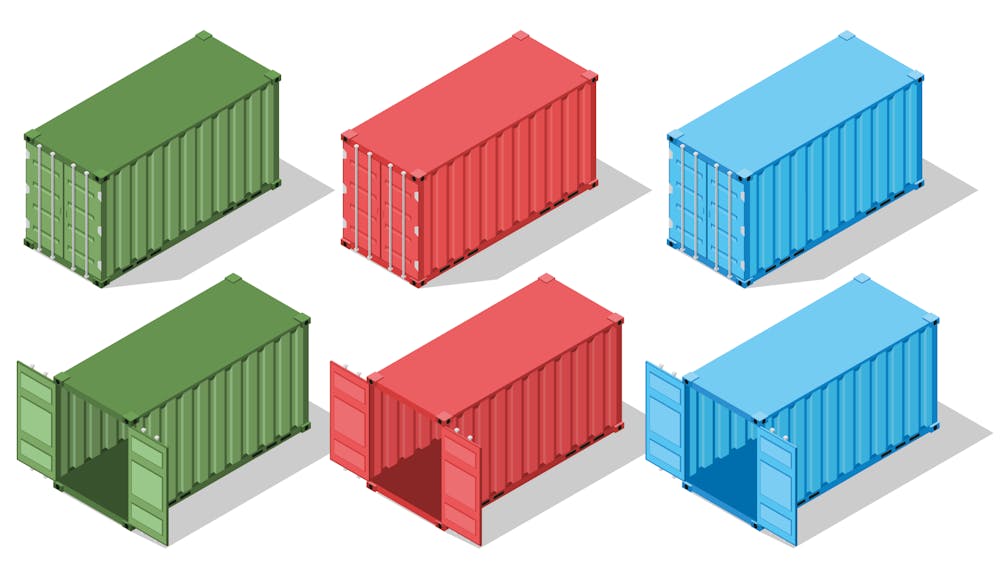
Container dimensions
Take a look at all the dimensions of the containers we have available. For each type of container we have highlighted the dimensions, weight and capacity.

Take a look at all the dimensions of the containers we have available. For each type of container we have highlighted the dimensions, weight and capacity.
A container is indispensable in contemporary transport. It is used for road, rail and sea transport. The container was introduced in the 30s by Malcolm McLean. However, it took another 20 years before the container was used. This happened with the White Pass & Yukon Route. There were problems with the transshipment of goods from train traffic and the standard dimensions of the container began to be adopted. The container is seen by many as the most important invention of the 20th century. Not surprising, when you see that over 100 million containers arrive in Rotterdam alone. This mass is due to the simplicity of the container. Mass is a word that fits well in today's shipping of containers. The biggest container ship is the Ever Ace from Evergreen, which was built in 2021 and can ship almost 24.000 TEU. When you would put these containers in a line, it would cause a traffic jam from Amsterdam to Enschede.
The dimensions of the standard containers are shown in the table below.
The dimensions of the reefer containers are shown in the table below.
The dimensions of the Open Top containers are shown in the table below.
The dimensions of the Flat Racks are shown in the table below.
The dimensions of the High Cube Pallet Wide containers are shown in the table below.
We work with standard dimensions so that a container fits on all possibilities of road, rail and sea transport. We call this standard size a TEU. TEU is the designation for the standard size. The abbreviation stands for Twenty Foot Equivalent Unit. 1 TEU is a container of 20 feet long, 8 wide and usually 8.5 high. In metric terms, a TEU is 6.10 metres long, 2.44 metres wide and 2.59 metres high. Because there are many developments on the demand side of the market, the container could not stay behind.
Reefers are also available nowadays. These containers are intended for temperature-sensitive goods. The container has a cooling unit that ensures that, for example, a load of meat remains good. Also the loading/unloading of the container has changed over the years. There are containers that are loaded and unloaded from above. These are called 'Open Top containers'. The Flat Rack container has also entered the market. This container has the same principle as the Open Top, but it can also be loaded from the side due to the lack of a fixed side wall. This can be useful when a load of goods is higher or wider than a normal container. There is also the option of a Highcube Palletwide container, which is 30 centimetres higher than a normal version. All these versions come in a 20ft variant and a 40ft variant. There is an exception with the 45ft container which is 5ft longer. The 40ft versions are also called 2 TEU. If you have any questions or would like to receive a quote today, you can always contact us.
Take a look at the container dimensions below. Every container has its own advantages and disadvantages. It is important to know which container suits your transport best. Transport by sea or ocean freight can be complicated because of the many additional requirements such as customs papers, so the necessary knowledge and experience is required. Through years of experience and a worldwide network, TTS TransOcean offers fast and reliable transport at the most competitive rates. We will search for the best ocean transport option for you, starting with researching which container dimensions are interesting for you.